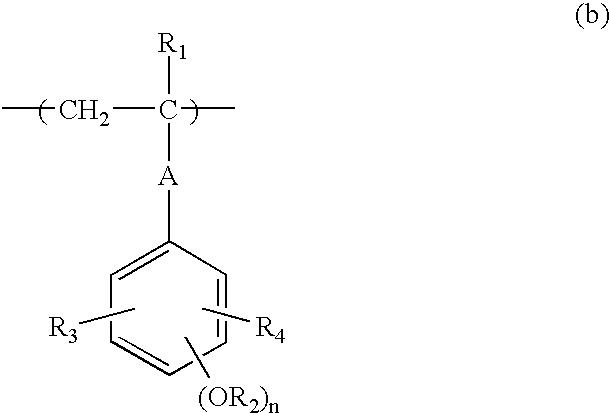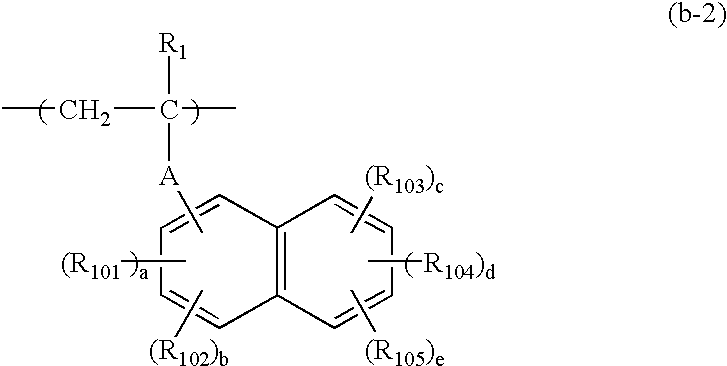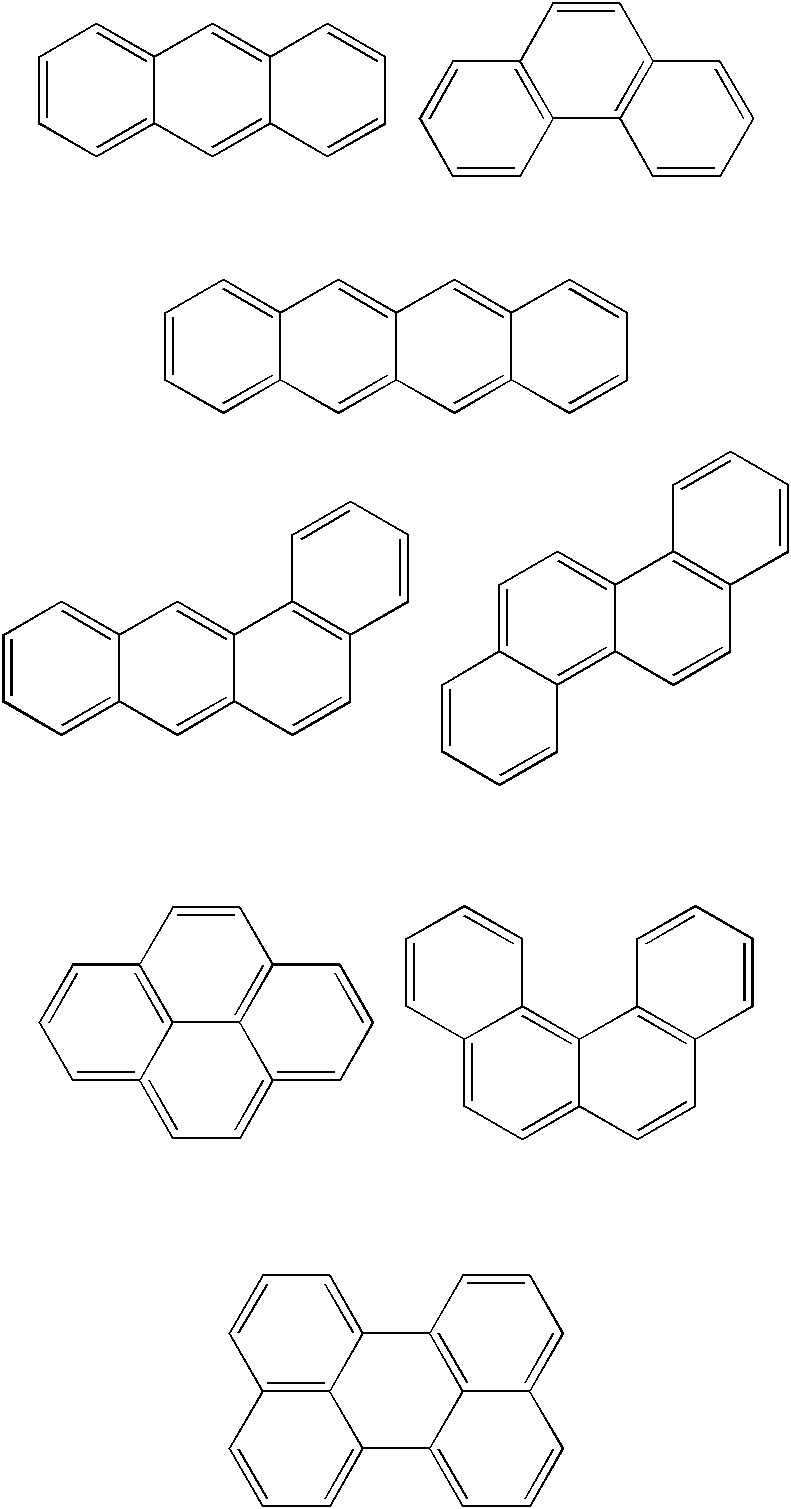Negative resist composition
a technology of resist and composition, applied in the field of negative resist composition, can solve the problems of reducing yield, degrading electrical properties, and rough line edge pattern, and achieve the effect of preventing resinification or gelation
- Summary
- Abstract
- Description
- Claims
- Application Information
AI Technical Summary
Benefits of technology
Problems solved by technology
Method used
Image
Examples
example 1
[0190] (1) Application of Negative Resist:
1 Component (A): Photo-acid generator PAG 4-7 0.05 g Component (B): Resin (1) 0.80 g Component (C): Crosslinking agent MM-1 0.20 g Crosslinking agent MM-6 0.05 g
[0191] The above components were dissolved in 8.5 g of propylene glycol monomethyl ether acetate. Further, 0.002 g of OE-1 as the component (E) was added thereto and dissolved therein. Additionally, 0.001 g of Megafac R-08 (produced by Dainippon Ink and Chemicals, Incorporated, hereafter referred to as "W-1") as a surfactant was added thereto and dissolved therein. The obtained solution was subjected to microfiltration by a membrane filter having an opening of 0.1 .mu.m to obtain a resist solution.
[0192] This resist solution was applied on a 6-inch wafer using a spin coater, Mark 8 (produced by Tokyo Electron Limited) and dried on a hot plate at 110.degree. C. for 90 seconds, to obtain a resist film having a film thickness of 0.3 .mu.m.
[0193] (2) Preparation of Negative Resist Patter...
examples 2 to 9
[0204] Using the respective components as shown in Table 1, resist solutions were prepared, and negative patterns were formed and evaluated in the same manner as in Example 1. The evaluation results are shown in Table 2.
example 10
[0213] (1) Application of Negative Resist:
4 Component (A): Photo-acid generator PAG 4-33 0.05 g Component (B): Resin (1) 0.80 g Component (C): Crosslinking agent MM-1 0.20 g Crosslinking agent MM-12 0.05 g
[0214] The above components were dissolved in 8.5 g of propylene glycol monomethyl ether acetate. Further, 0.002 g of OE-1 as the component (E) was added thereto and dissolved therein. Additionally, 0.001 g of W-1 as a surfactant was added thereto and dissolved therein. The obtained solution was subjected to microfiltration by a membrane filter having an opening of 0.1 .mu.m to obtain a resist solution.
[0215] This resist solution was applied on a 6-inch wafer using a spin coater, Mark 8 (produced by Tokyo Electron Limited) and dried on a hot plate at 110.degree. C. for 90 seconds, to obtain a resist film having a film thickness of 0.3 .mu.m.
[0216] (2) Preparation of Negative Resist Pattern:
[0217] The obtained resist film was irradiated using an electron beam image-drawing unit (HL7...
PUM
| Property | Measurement | Unit |
|---|---|---|
| Percent by mass | aaaaa | aaaaa |
| Wavelength | aaaaa | aaaaa |
| Length | aaaaa | aaaaa |
Abstract
Description
Claims
Application Information
 Login to View More
Login to View More - R&D
- Intellectual Property
- Life Sciences
- Materials
- Tech Scout
- Unparalleled Data Quality
- Higher Quality Content
- 60% Fewer Hallucinations
Browse by: Latest US Patents, China's latest patents, Technical Efficacy Thesaurus, Application Domain, Technology Topic, Popular Technical Reports.
© 2025 PatSnap. All rights reserved.Legal|Privacy policy|Modern Slavery Act Transparency Statement|Sitemap|About US| Contact US: help@patsnap.com



